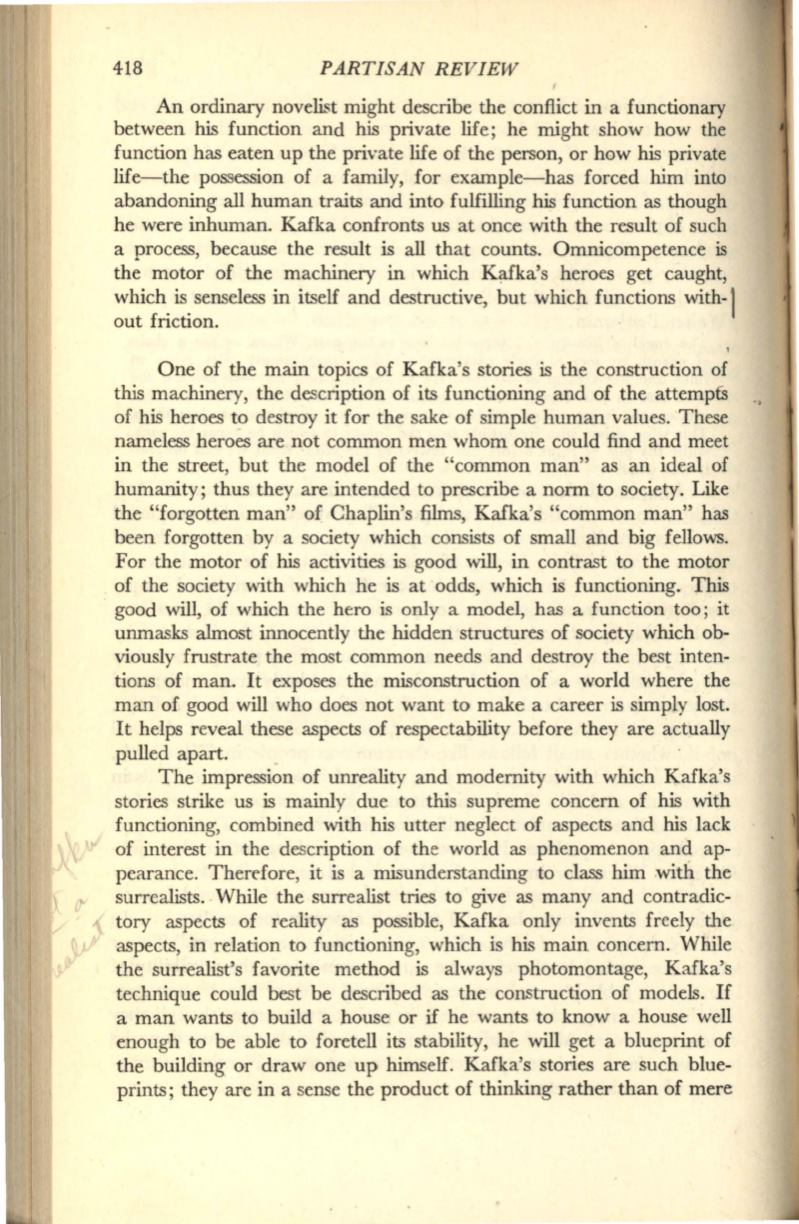
418
PARTISAN REVIEW
An ordinary novelist might describe the conflict in a functionary
between
his
function and
his
private life; he might show how the
function has eaten up the private life of the person, or how his private
life-the possession of a family, for example- has forced him into
abandoning all human traits and into fulfilling his function as though
he were inhuman. Kafka confronts us at once with the result of such
a process, because the result is all that counts. Omnicompetence
is
the motor of the machinery
in
which
K~fka's
heroes get caught,
which is senseless
in
itself and destructive, but which functions with-J
out friction.
One of the main topics of Kafka's stories is the construction of
this machinery, the description of its functioning and of the attemptS
of his heroes to destroy it for the sake of simple human values. These
nameless heroes are not common men whom one could find and meet
in the street, but the model of the " common man" as an ideal of
humanity; thus they are intended to prescribe a norm to society. Like
the "forgotten man" of Chaplin's films, Kafka's "common man" has
been forgotten by a society which consists of small and big fellows.
For the motor of his activities is good
will,
in contrast to the motor
of the society with which he is at ·odds, which is functioning. This
good will, of which the hero is only a model, has a function too; it
unmasks almost innocently the hidden structures of society which ob–
viously frustrate the most common needs and destroy the best inten–
tions of man. It exposes the misconstruction of a world where the
man of good will who does not want to make a career is simply lost.
It helps reveal these aspects of respectability before they are actually
pulled apart.
_
The impression of unreality and modernity with which Kafka's
stories strike us is mainly due to this supreme concern of his with
functioning, combined with his utter neglect of aspects and his lack
of interest in the description of the world as phenomenon and ap–
pearance. Therefore, it is a misunderstanding to class him .with the
surrealists. While the surrealist tries to give as many and contradic–
tory aspects of reality as possible, Kafka only invents freely the
aspects, in relation to functioning, which is his main concern. While
the surrealist's favorite method is always photomontage, Kafka's
technique could best be described as the construction of models.
If
a man wants to build a house or if he wants to know a house well
enough to be able to foretell its stability, he will get a blueprint of
the building or draw one up himself. Kafka's stories are such blue–
prints; they are in a sense the product of thinking rather than of mere


